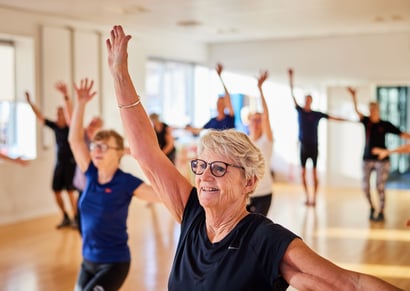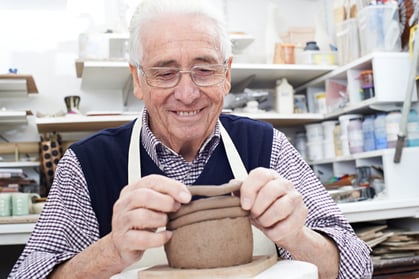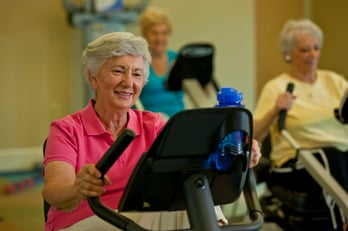 The quick answer, we became experts because we have been specializing in this population for over 20 years in our work in senior living communities. It takes time and dedication to develop a niche as strong as what NIFS has within an industry. We have been part of the wellness evolution as fitness centers were included in renovations and master plans and communities looked to staffing and programming models to help their residents use these amenities safely. We’ve further witnessed consumer options evolve in the senior living landscape with more choices than ever before on where older adults choose to live including 55+ neighborhoods, IL communities, to lifeplan communities. Each environment has its own priorities and challenges in supporting the health and fitness needs of the residents who live there but all understand the necessity of providing vibrant lifestyles. The industry is expected to grow by $100 billion by 2027 alone which means more even more options for consumers. That’s where NIFS Wellness Companion comes into play as a solution in fitness, nutrition and wellness resources that seamlessly plug into the needs of senior living communities.
The quick answer, we became experts because we have been specializing in this population for over 20 years in our work in senior living communities. It takes time and dedication to develop a niche as strong as what NIFS has within an industry. We have been part of the wellness evolution as fitness centers were included in renovations and master plans and communities looked to staffing and programming models to help their residents use these amenities safely. We’ve further witnessed consumer options evolve in the senior living landscape with more choices than ever before on where older adults choose to live including 55+ neighborhoods, IL communities, to lifeplan communities. Each environment has its own priorities and challenges in supporting the health and fitness needs of the residents who live there but all understand the necessity of providing vibrant lifestyles. The industry is expected to grow by $100 billion by 2027 alone which means more even more options for consumers. That’s where NIFS Wellness Companion comes into play as a solution in fitness, nutrition and wellness resources that seamlessly plug into the needs of senior living communities.
What makes NIFS niche in senior living special? It comes down to 3 areas of expertise.
- We hire degreed professionals and provide them with rigorous training to become specialists in senior fitness. Few fitness professionals on the market possess the skillset to step into a senior living setting and provide aquatics programming, fall prevention services, balance assessments, group fitness classes and the background to prescribe customized exercise plans for someone 70+. NIFS staff report their skillset unique to older adult programming increases by 75% in their first year upon joining our team and 90% of these team members already possess a degree in exercise science. The needs of your residents and program are truly a specialization.
- Because we have worked in senior living for over 20 years with our fitness management clients, we know the players and we know the motivations in your community. Your lifestyle director is a jack of all trades often playing a role with activities, the concierge, transportation and outings. They love making their residents happy and are stretched on time and resources. Marketing and sales know that the ability to showcase a vibrant lifestyle is essential to their ability to meet occupancy goals. Your nursing staff knows that residents who are physically active and engaged can stay independent longer while decreasing fall risks
- We know your residents. We know that you have several different populations living within your community ranging from those in their late 60’s to 100+. We know that it takes variety in programs and the right approach to effectively engage them in what is being offered. This is truly where our specialization in creating content and programs is rooted. We understand the interests, barriers and goals of seniors and we have spent two decades flexing our creative muscles to effectively connect residents with education and programming that keeps them regularly engaged.


 As the end of 2020 approaches, there are daily reminders that life has changed. For some, these reminders are feelings of loneliness that didn’t exist just a few months ago. Older adults are at the highest level of risk for severe illness from COVID-19 and
As the end of 2020 approaches, there are daily reminders that life has changed. For some, these reminders are feelings of loneliness that didn’t exist just a few months ago. Older adults are at the highest level of risk for severe illness from COVID-19 and  Community wellness programming is one of the most important ways to keep your residents engaged. As wellness professionals, it’s our job to make sure that the programs being put into play are impactful and enjoyable, and continue to set precedents and work on the varying dimensions of wellness.
Community wellness programming is one of the most important ways to keep your residents engaged. As wellness professionals, it’s our job to make sure that the programs being put into play are impactful and enjoyable, and continue to set precedents and work on the varying dimensions of wellness.